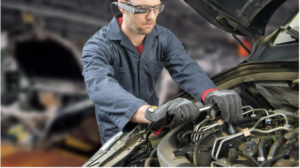ABOM® Introduces First Fully Integrated Augmented Reality (AR) Goggle Designed to Meet Military Standards and Extreme Use-Case Performance

The ABOM P3 Goggle design integrates display technology that feature stereoscopic dual displays with ultra-high brightness output with adjustable control and 1080p output. The P3 AR solution features 3D spatial mapping and tracking, extremely accurate tracking of orientation, velocity and positioning using IMU/GPS-GNSS/INS capability. ABOM also introduces the first augmented reality display solution optimized with Military Ballistics rated Lens (MIL-PRF 32432A) to the MCEP compliance meeting many challenging elements of the US ARMY’s IVAS specification (HUD 3.0). ABOM P3 features also include advanced thermal image sensors, advanced image and visual processing, and extremely accurate tracking capability of orientation, velocity and positioning using embedded GPS/GNSS/INS receiver technology. Embedded within the Goggle Chassis is an ultra-high performance Depth Camera supported by two Infrared (IR) cameras optimized for low-light conditions up to 10 meters. ABOM P3 AR goggle is field-use ready and designed for extreme environmental durability and cold-weather climate conditions where demanding ruggedized performance is critical. The P3 for Industrial applications also meets ANSI Z87.1+ high mass impact rating and IP-55 Ingress Protection for water and dust protection, which opens the door for supporting the National Safety Council technology initiatives and requirements for meeting extreme IP-67 rating compliance.
“ABOM P3 AR goggle solution is a purpose-built Augmented Reality eyewear system that incorporates ABOM’s patented ultra-low power thin-film technology, making it impossible for fog to survive on the inner surface of the eyewear,” said Kyle Cherry, CEO of VX Inc.
“ABOM’s award-winning heated goggle technology, now Military approved, has made integration and optimization with immersive, augmented reality display technology the perfect solution for highly ruggedized extreme use-cases that exceed industry standards for both quality and performance.
ABOM’s development partner for the P3 Goggle, VX Inc., has pushed the limits of mechanical and electrical engineering design performance,” said Jack Cornelius, ABOM CEO. “We are thrilled to have achieved this level of advanced embedded electronics and application integration based on ABOM’s goggle form factor requirement and ABOM’s goal to meet the majority of the challenging US ARMY IVAS HUD 3.0 specification.
This new level of advanced AR design and integration brings a vast amount of exciting new functionality, capability and applications for safety, industrial and military markets.
THE ABOM P3 will be demonstrated at AUGMENTED WORLD EXPO (AWE) 2019, SANTA CLARA, CA, BOOTH #814








